Sloths are very unique and known for their slow movements. As most of us have never seen them in real, we do wonder where they are found. Here we have gathered complete information about Where Do Sloth Live and what is the natural Sloth Habitat. You are going to learn what is the natural habitat of each of its species, their habitat map, the range of each of its species, why are they found in such habitat and other interesting Sloth Habitat facts. So read this page till the end and discover Where do Sloths live.
Where Do Sloths Live
Where Do Sloths Live In The Rainforest
- In the rainforest, sloths live in the canopy region.
- They spend most of their lives hanging upside down from the tree branches in the canopy region of the forest.
- They come down to the ground only when they need to urinate or defecate.
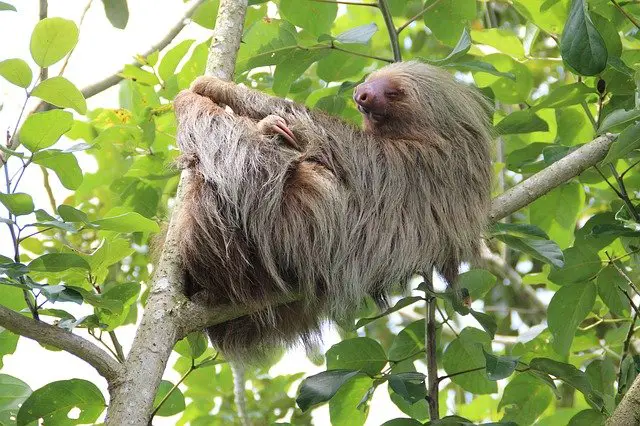
Where Are Sloths From
- Sloths are from the tropical rainforests of South and Central America.
Sloth Natural Habitat
The natural habitat of sloths is the tropical rainforests and cloud forests of South and Central America. The habitat of each of its species is described below:
Pygmy Three-toed Sloth (Bradypus pygmaeus)
- The natural habitat of pygmy three-toed sloths is unique to all the sloth species.
- They are found only in the coastal red mangroves.
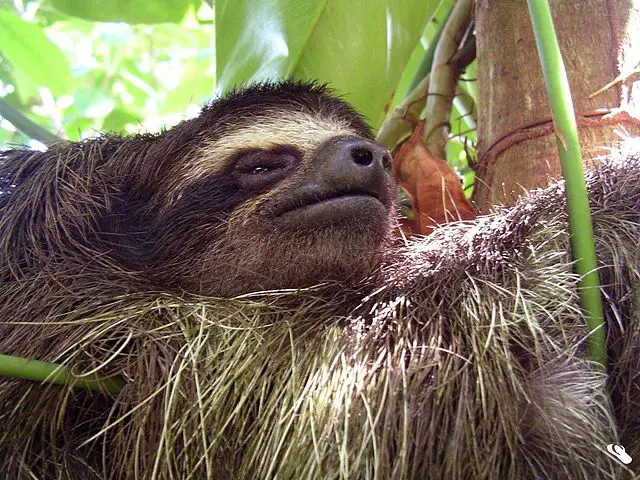
Maned Three-toed Sloth (Bradypus torquatus)
- The natural habitat of maned three-toed sloths is the Atlantic coastal rainforests.
- They inhabit evergreen forests, secondary forests, and semi-deciduous forests.
- They live in the canopy region of the forest.
- Their habitat typically has a hot and humid climate and receives about 120 cm (47 inches) annual rainfall.
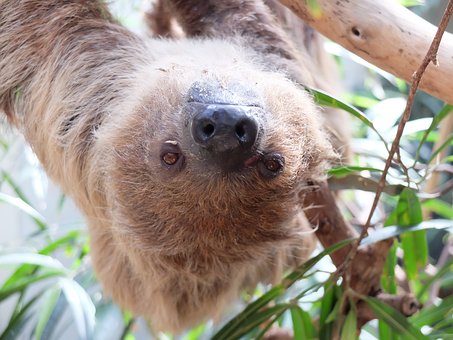
Pale-throated three-toed sloth (Bradypus tridactylus)
- Pale-throated three-toed sloths inhabit the tropical rainforests.
- Like most other sloth species, they also live in the canopy region of the forest.

Brown-throated three-toed sloth (Bradypus variegatus)
- Brown-throated three-toed sloths are found in tropical rainforests, semi-deciduous forests, subtropical lowland forests, and swamps.
- Their habitat is found at an elevation of about 1,200 m (3,900 feet) from sea level.
- They live in the canopy region of the forest and rarely come down to the forest floor.
- Brown-throated three-toed sloths usually tend to live in trees where they have high exposure to sunlight, probably to fulfill their thermoregulatory requirements.

Linnaeus’s two-toed sloth (Choloepus didactylus)
- The habitat of Linnaeus’s two-toed sloths is the ever-wet tropical rainforests with a hot and humid climate.
- Like most other sloths, they live in the canopy region of the forest.
- They tend to live in regions with a lot of vine growth, which facilitates their movement from tree to tree in the canopy of the forest.
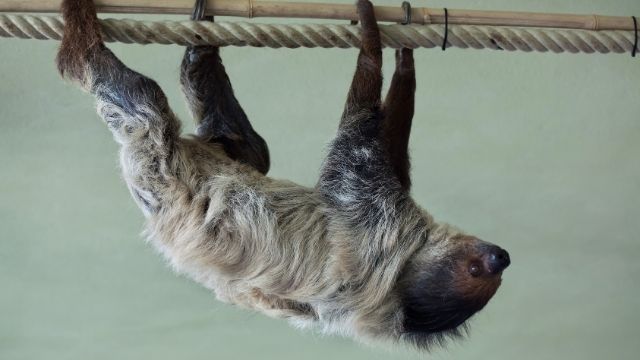
Hoffmann’s two-toed sloth (Choloepus hoffmanni)
- The habitat of Hoffmann’s two-toed sloths is the lowland forests and the higher elevation rainforests.
- They primarily live in the continuous canopy regions.
- Their higher elevation habitat has about 3,300 m (10,800 feet) altitude above sea level.
- The selection of their habitat is correlated with the preference of the trees and with the social inheritance of the home range of the mother.

Sloth Habitat Map
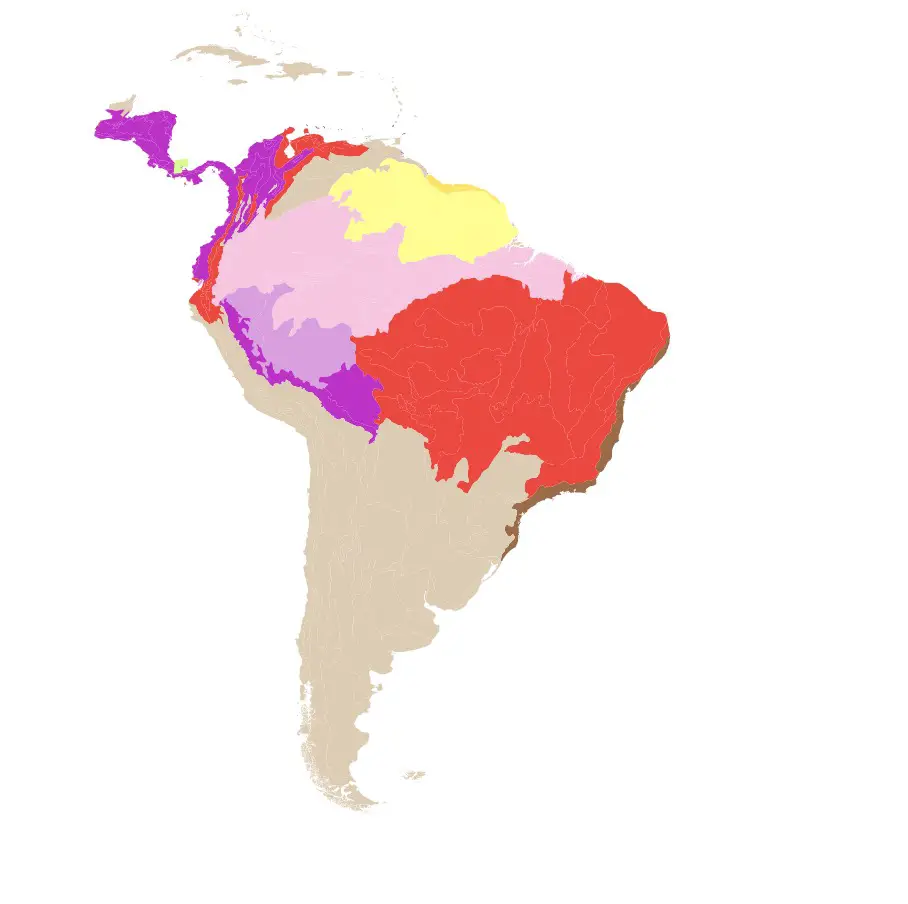
Sloth Range
The following is the habitat range of all the six sloth species:
Pygmy Three-toed Sloth (Bradypus pygmaeus)
- Pygmy three-toed sloths are found only on Isla Escudo de Veraguas, which is a small Caribbean island located off the coast of Panama.
- They have a very restricted range because the island is small with about 4.3 square kilometers (1.7 sq mil) of area.
- The pygmy sloths are found in the mangroves, which occupy only 10.67 hectares (0.0412 sq mil) on the island.
Maned Three-toed Sloth (Bradypus torquatus)
- The habitat range of maned three-toed sloths is in the coastal Atlantic rainforests of southeastern Brazil.
- Their habitat range is located in the Bahia, Espirito Santo, and Rio de Janeiro states of Brazil.
Pale-throated three-toed sloth (Bradypus tridactylus)
- The habitat range of the pale-throated three-toed sloths is the tropical rainforests from southern Central America to northeastern Argentina.
- Their habitat range is located in countries including Guyana, Suriname, French Guiana, eastern Venezuela, and Brazil.
Brown-throated three-toed sloth (Bradypus variegatus)
- Brown-throated three-toed sloths are indigenous to South America and the southern regions of Central America.
- In the north, their habitat range starts from Honduras and extends through Nicaragua, Costa Rica, and Panama into Venezuela, Columbia, Bolivia, Ecuador, Brazil, and eastern parts of Peru.
Linnaeus’s two-toed sloth (Choloepus didactylus)
- The habitat range of Linnaeus’s two-toed sloths is located in northern South America and Central America.
- In northern South America, their habitat range covers the north of the Amazon River in the countries of Guyanas, Venezuela, Columbia, Ecuador, Peru, and Brazil.
- Evidence suggests that their range extends farther into Bolivia.
Hoffmann’s two-toed sloth (Choloepus hoffmanni)
- The habitat range of Hoffmann’s two-toed sloths covers two separate regions in Central and South America.
- Based on the habitat range, their population is divided into southern and northern. The Andes mountains separate the range of both populations.
- The habitat range of the southern population covers the eastern regions of the Andes in Ecuador, Peru, Bolivia, and western Brazil.
- The habitat range of the northern population extends from Central America to northern and western regions of Columbia, western parts of Ecuador, and westernmost regions of Venezuela.
Why Do Sloths Live In Such Habitat
- Sloths live in such habitat because:
- Their overall body structure is built in such a way that can only survive in such a habitat. Their body is well-adapted only to an arboreal lifestyle and it is very difficult for them to live on the ground or other types of habitats.
- They are folivores and they have easy access to food in such habitats.
Sloth Habitat Facts
- Sloths are found in the rainforests and cloud forests of South and Central America.
- They are exclusively arboreal animals and spend their entire lives hanging upside down in trees.
- They inhabit the canopy region of the forest and come down to the forest floor only when they need to urinate or defecate.
- The overall body structure and physiology of sloths are well adapted to the arboreal lifestyle and the climate of tropical rainforest. They are unable to be naturally found and survive in other habitats on the earth.
- The habitat of pygmy three-toed sloths is unique to all the sloth species. They inhabit coastal red mangroves on the island of Isla Escudo de Veraguas (a small Caribbean island).
- The habitat range of pygmy three-toed sloths is also very small of all the sloth species and is confined only to the 10.67 hectares (0.0412 sq mil) region on the island.
- The habitat range of the brown-throated three-toed sloths is the widest of all the sloth species. Besides rainforests, they are also found in evergreen and dry forests.











